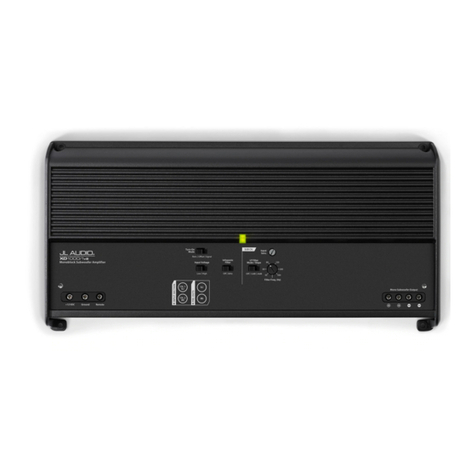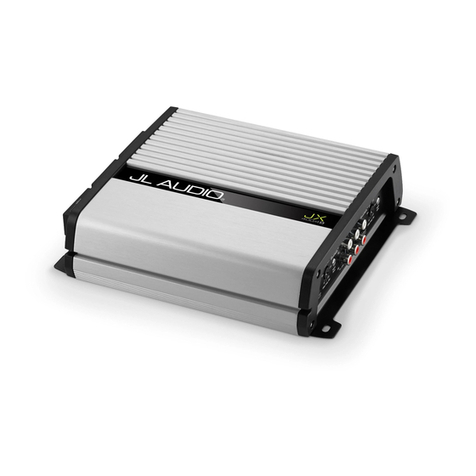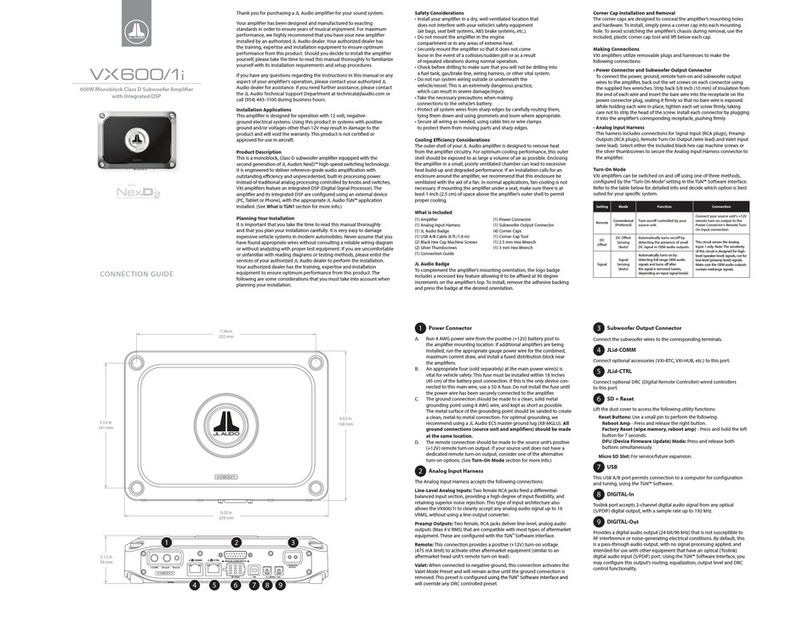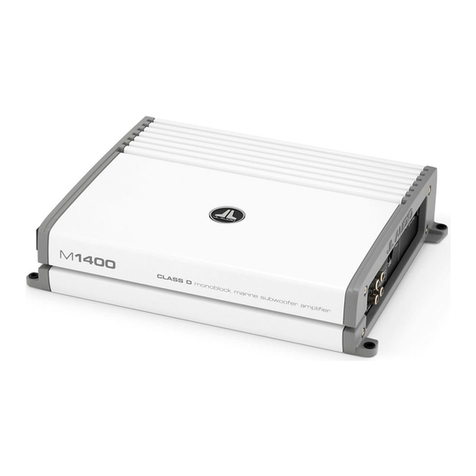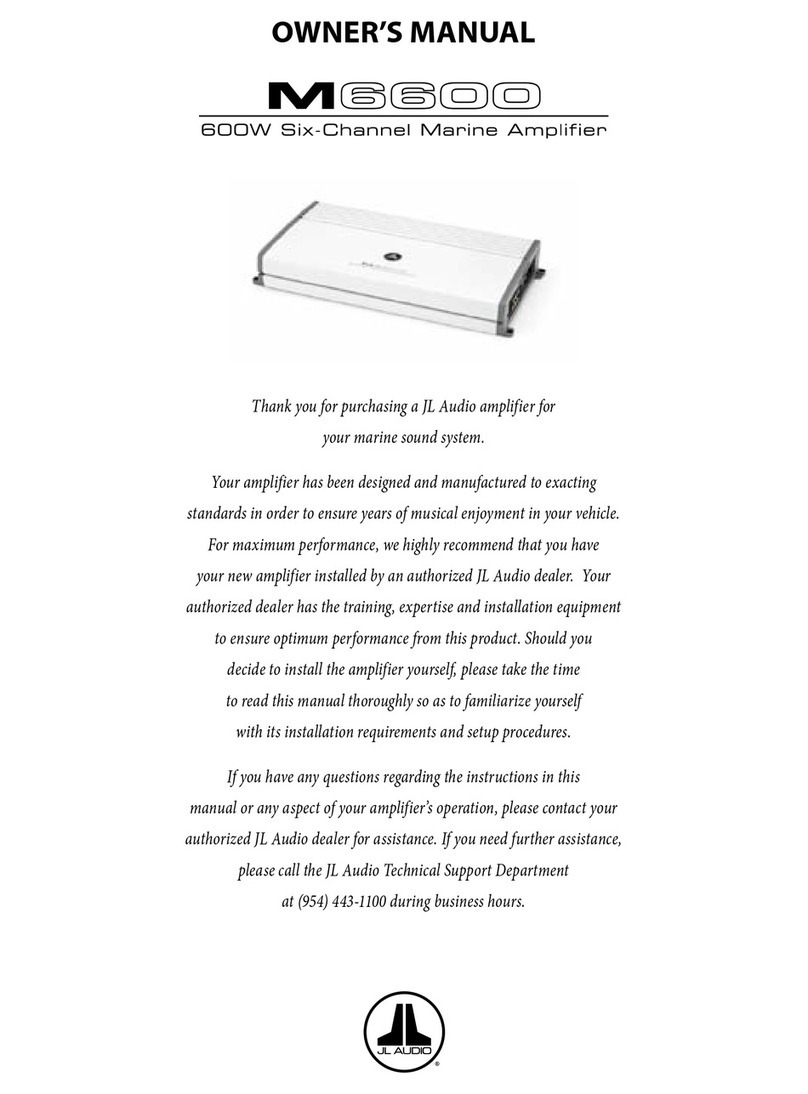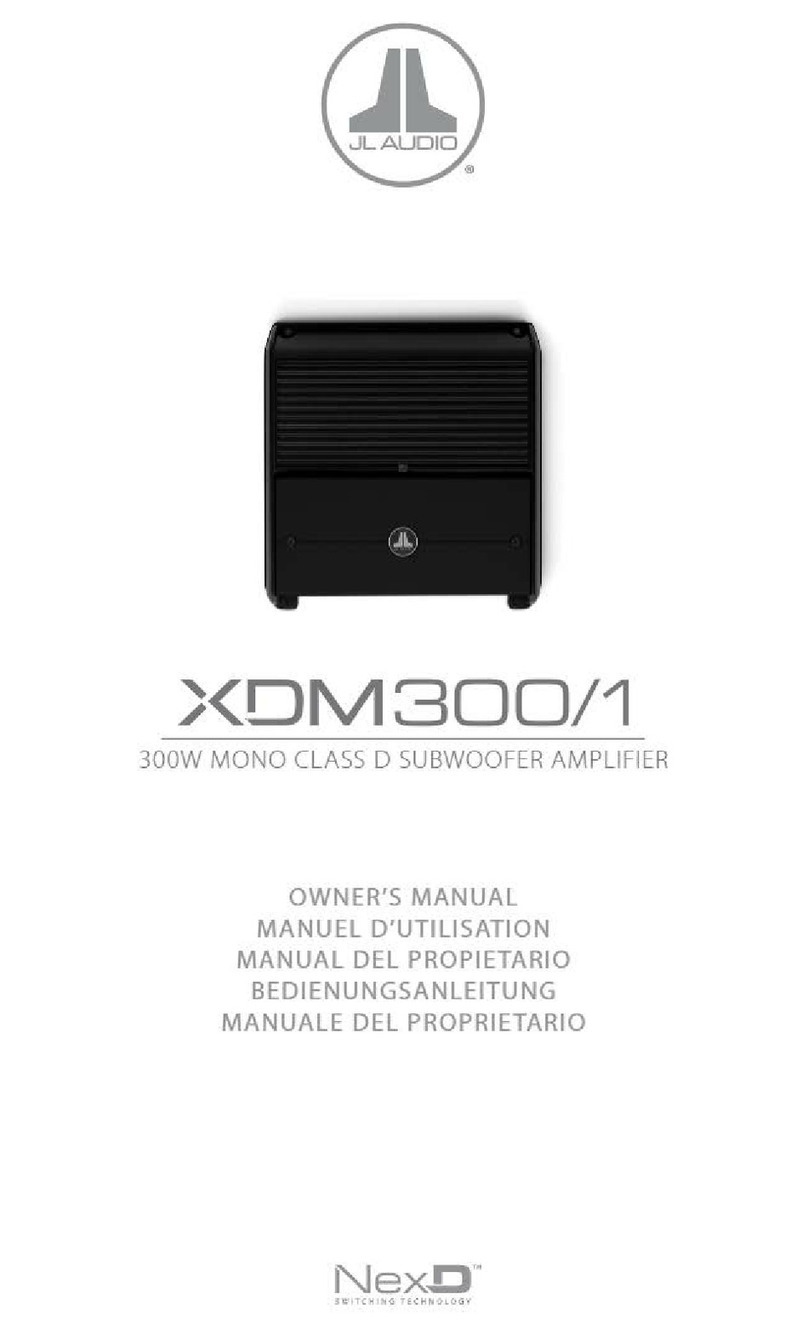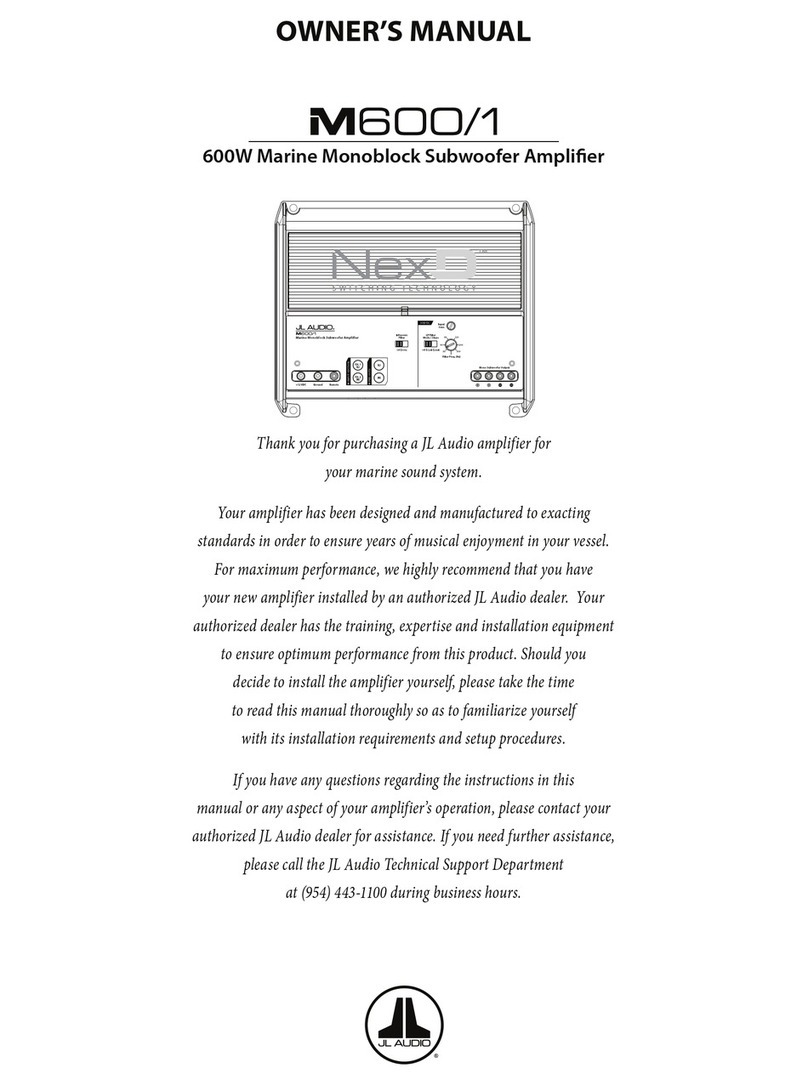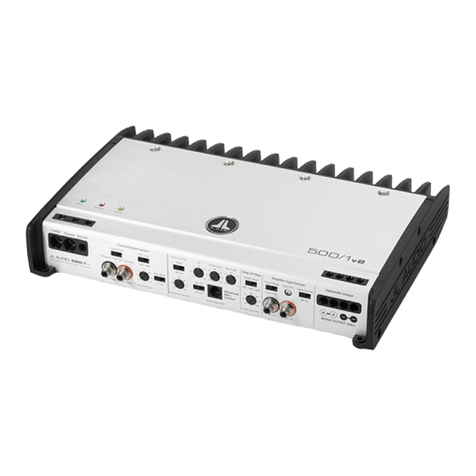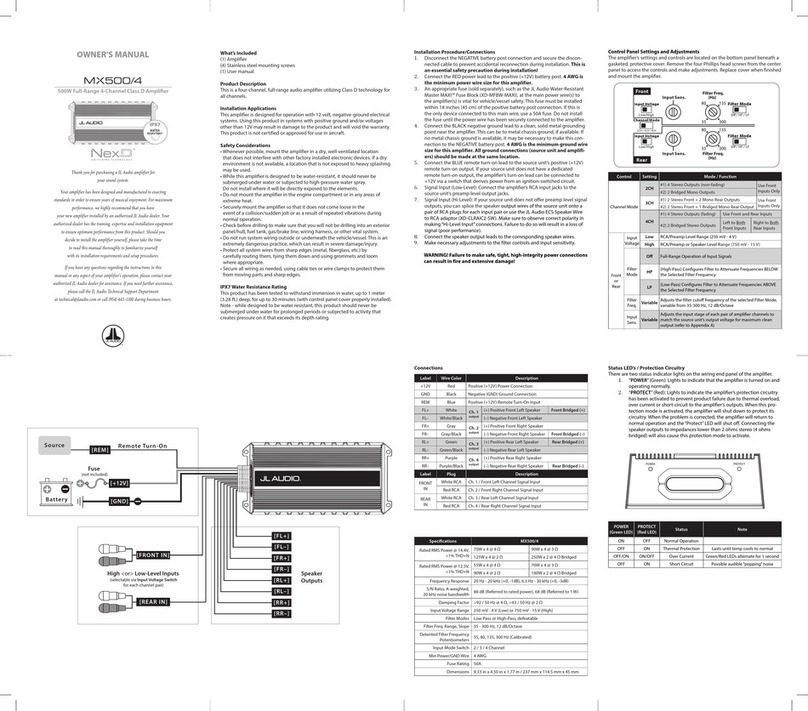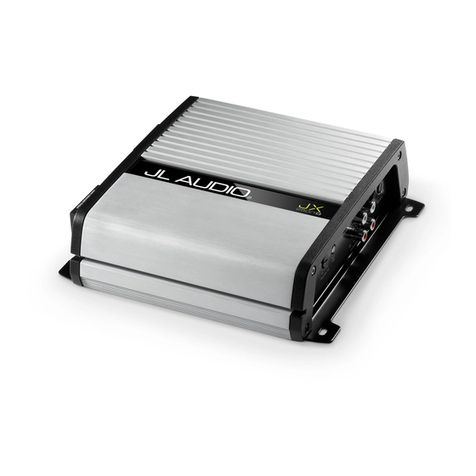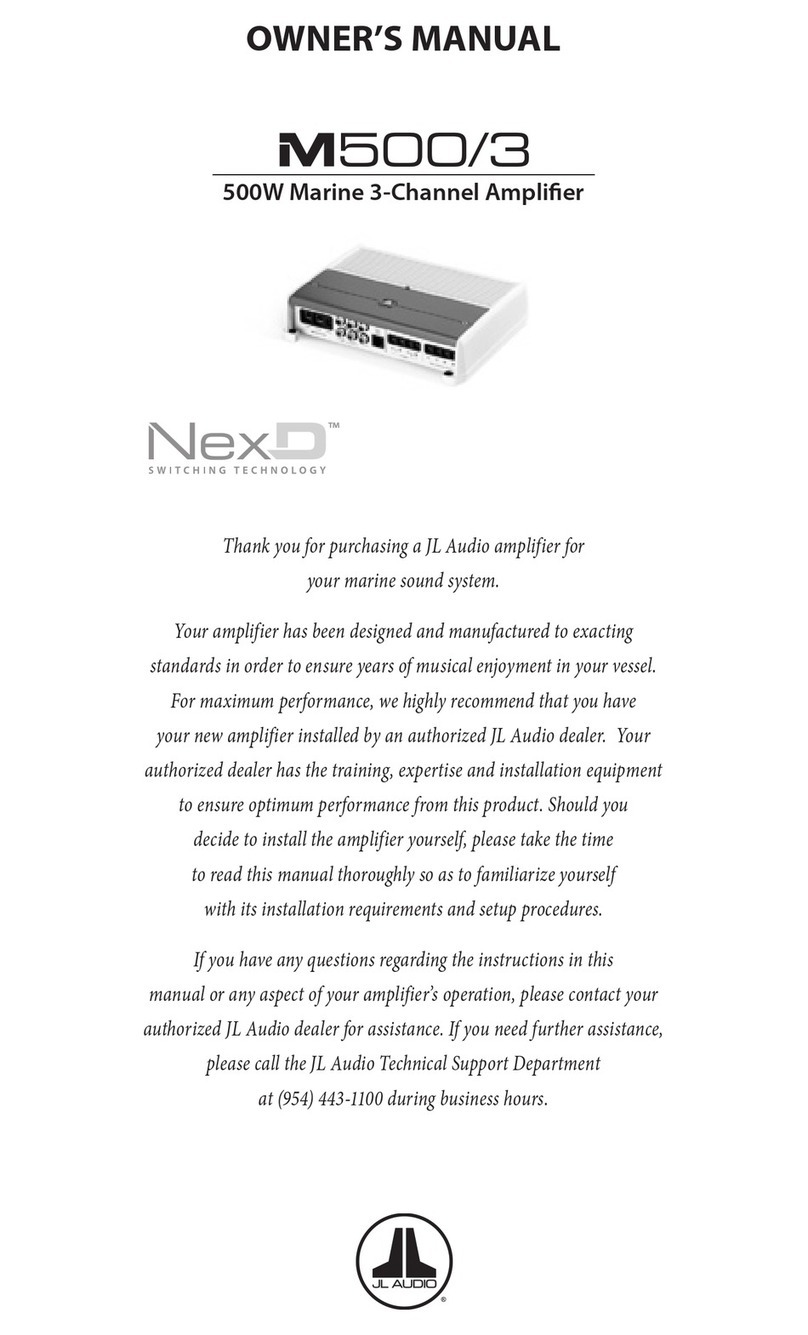
4 | JL Audio - XD300/1 Owner’s Manual
PRODUCT DESCRIPTION
5IF9%JTBNPOPCMPDL
BNQMJGJFSVUJMJ[JOH+-"VEJP/FY%IJHI
speed switching technology to deliver
outstanding fidelity and efficiency.
5IF9%DBOCFPQFSBUFEXJUIBXJEF
variety of source units and system configurations.
Its frequency response is limited to the range
CFMPX)[L)[*UJTOPUEFTJHOFEGPS
driving midrange speakers or tweeters. Its
operation has been optimized for low-frequency
amplification. For detailed specifications, please
SFGFSUP"QQFOEJY$QBHF
TYPICAL INSTALLATION SEQUENCE
The following represents the sequence
for a typical amplifier installation, using an
aftermarket source unit or OEM Interface
processor (like the CleanSweep CL441dsp).
Additional steps and different procedures may
be required in some applications. If you have
any questions, please contact your authorized
JL Audio dealer for assistance.
1)%JTDPOOFDUUIFOFHBUJWFCBUUFSZQPTU
connection and secure the disconnected cable
to prevent accidental re-connection during
installation. This step is not optional.
2) Run 8 or 4 AWG power wire from the battery
location to the amplifier mounting location,
taking care to route it in such a way that it
will not be damaged and will not interfere
with vehicle operation. Use 4 AWG or larger
power wire and a power distribution block if
additional amplifiers are being installed with
UIF9%
3) Connect power wire to the positive battery
post. Fuse the wire with an appropriate fuse
block (and connectors) within 18 inches (45
cm) wire length of the positive battery post.
This fuse is essential to protect the vehicle.
Do not install the fuse until the power wire
has been securely connected to the amplifier.
4) Run signal cables and remote turn-on wire
from the source unit to the final amplifier
mounting location.
5) Run speaker cables from the speaker systems
to the amplifier mounting location.
6) Find a good, solid metal grounding point
close to the amplifier and connect the
negative power wire to it using appropriate
hardware (use of the JL Audio ECS master
ground lug, XB-MGLU is recommended).
6TFPS"8(XJSFOPMPOHFSUIBO
JODIFTDNGSPNUIFBNQMJGJFSUPUIF
ground connection point. In some vehicles,
it may be necessary to upgrade the battery
ground wire. (See page 5 for important
notice).
7) Securely mount the amplifier.
8) Connect the positive and negative power
wires to the amplifier. A fuse near
the amplifier is not necessary if the
9%JTUIFPOMZEFWJDFCFJOHSVO
from the fused main power wire. If
the fused main power wire is shared
CZUIF9%BOEPUIFSBNQMJGJFST
or devices, fuse each amplifier/device
XJUIJOJODIFTDNPGXJSFMFOHUI
via a fused distribution block or multiple
individual fuse blocks/on-board fuses.
9) Connect the remote turn-on wire
to the amplifier.
10) Connect the input cables to the amplifier.
11) Connect the speaker cables to the amplifier.
12) Carefully review the amplifier’s control
settings to make sure that they are set
according to the needs of the system.
13)*OTUBMMUIFQPXFSXJSFGVTF"GPSB
TJOHMF9%BOESFDPOOFDUUIFOFHBUJWF
CBUUFSZQPTUUFSNJOBM*OTUBMMUIFGVTF"
near the amplifier (if applicable).
14) Turn on the source unit at a low level
to double-check that the amplifier is
configured correctly. Resist the temptation
to crank it up until you have verified the
control settings.
15) Make necessary adjustments to the input
sensitivity controls to obtain the right
overall output and the desired balance
in the system. See Appendix A (page 12)
for the recommended input sensitivity
setting method.
16) Enjoy the fruits of your labor with your
favorite music.
